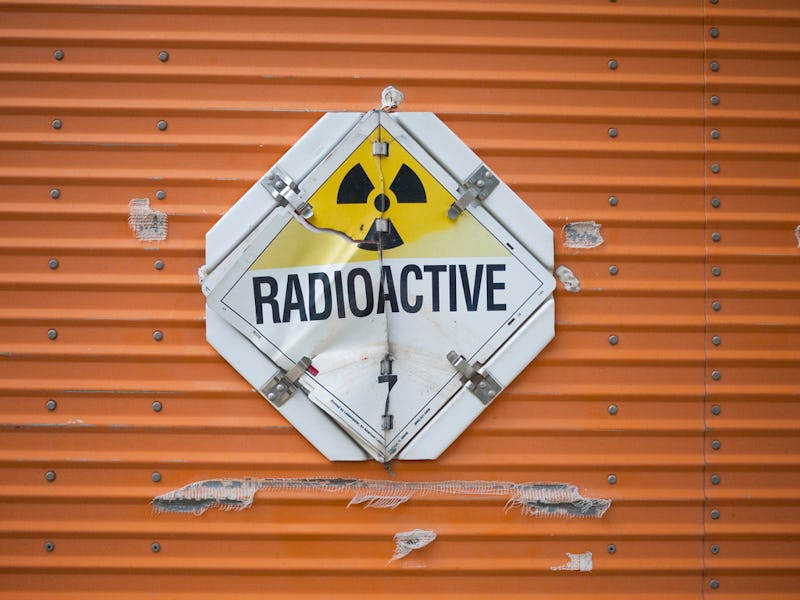ISIS Wants a Dirty Bomb, a Weapon of Mass Disruption
A dirty bomb is hard to make but the most dangerous factor would still be the blast.

ISIS, which has claimed responsibility for the attack in Brussels today, and associated radicals have been increasingly active in Belgium during the months leading up to this latest act of terror. In November, a man living near Brussels and linked to the Islamic State group was arrested; according to an investigation by the nonprofit Center of Public Integrity, officials found evidence he was surveilling a Belgian nuclear facility with the goal of creating a dirty bomb.
If you are unfamiliar with the family tree of explosives, a dirty bomb is meant to disseminate chaos and mayhem. However, it will not result in the high body counts popularly associated with radioactive weaponry. What makes a dirty bomb “dirty” is the dispersal of radioactive material. The explosion itself is conventional — likely result of a bomb a containing nitrogen compounds, like dynamite or TNT — rather than a result of nuclear activity. To make a dirty bomb is to simply wrap radioactive waste or material around a high explosive.
But if it sounds “simple” on paper, it’s much harder to do in practice. No terrorist group or single operator has ever set one off, two decades of murderous aspirations to the contrary. “Constructing a dirty bomb is more difficult than most imagine,” as journalist Jason Burke wrote at Foreign Policy in 2009 when discussing al Qaeda’s dirty bomb plans:
“Although the International Atomic Energy Agency warns that more than 100 countries have inadequate control of radioactive material, only a small percentage of that material is lethal enough to cause serious harm. It also requires considerable technical sophistication to build a device that can effectively disperse radioactive material. Some have also voiced the fear that militants might obtain a ‘prepackaged’ working nuclear warhead from Pakistan. However, that would only be a plausible scenario if an Islamic regime came to power, or if high-ranking elements of the Pakistani military developed greater sympathy for the Islamists than currently exists.”
José Padilla
Consider José Padilla, the paunchy radicalized American perhaps most frequently associated with a dirty bomb plot. Padilla was not, in fact, charged with his dirty bomb designs, because he was unable to progress beyond planning to whirl buckets of uranium over his head to separate the U-235 isotope for his nuclear device.
The fissile materials at the center of a nuke — like enriched uranium — are both prohibitively difficult to create and obtain. Daily life, that said, is far from radioisotope-free. There are thousands of known radioactive materials, wrote Center for Technology and National Security Policy researchers Peter D. Zimmerman and Cheryl Loeb in a 2004 report. But “only a few stand out as being highly suitable for radiological terror. These are cobalt-60 (60Co), strontium-90 (90Sr) (and its short-lived daughter, yttrium-90), cesium-137 (137Cs), iridium-192 (192Ir), radium-226 (226Ra), plutonium-238 (238Pu), americium-241 (241Am), and californium-252 (252Cf).”
Limited as they are, such radioactive sources can be found in research institutions, hospitals, industry, or construction. Cancer treatments use iodine-131 and cobalt-60, smoke alarms use americium-241. But amassing enough material without tripping federal failsafes is tough. So is handling it. People who encounter unusual concentrations of nuclear material — woodcutters in Georgia, scavengers pawing through an abandoned chemo clinic in Brazil — have given themselves severe radiation poisoning.
Ultimately, were a dirty bomb to be detonated, biosecurity and environmental health experts believe most of the loss of life would come from the blast itself. Exposure to radiation, one report estimates, would increase the lifetime likelihood of cancer on par with “smoking five packages of cigarettes.” If you didn’t inhale any particles and carefully scrubbed yourself clean, the risk would be even lower. The majority of the devastation would be psychological and economic — the site of the explosion, and the incorporeal specter of radiation in the public mind, would remain a lasting reminder of a terrorist attack.
The Nuclear Regulatory Commission, in fact, doesn’t even consider dirty bombs weapons of mass destruction. Instead, the NRC says, consider them weapons of mass disruption.